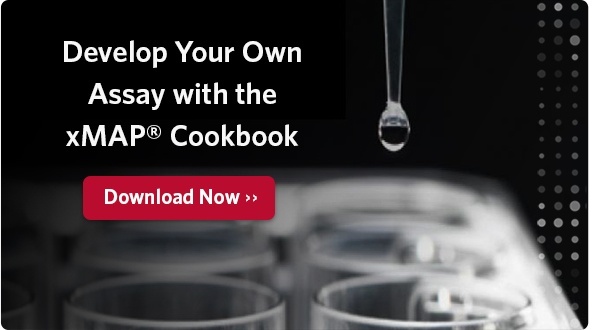Expanding spoligotyping of multidrug-resistant tuberculosis to the Luminex xMAP® platform to increase reproducibility, flexibility and throughput
Approximately one third of the world’s population is infected with the tuberculosis (TB) bacteria, Mycobacterium tuberculosis Complex (MTBC), which is one of the deadliest infectious diseases world-wide. One of the greatest threats to global TB control is the growing prevalence of drug resistant strains. In 2014, multidrug-resistant TB (MDR-TB) accounted for about 3.3% of new TB cases and 20% of previously treated cases. The need for novel molecular methods to rapidly identify TB is critical.

Build It: A Short History of xMAP -based Laboratory Developed Tests
Spoligotyping has been the gold standard method to diagnose TB for nearly 20 years, with over 1,000 cumulative citations on PubMed. Developed by van Soolingen in 1998, it detects 43 spacers in the Clustered Regularly InterSpaced Palindromic Repeats (CRISPR) region of MTBC strains and allows for the characterization of clinical isolates at a phylogeographical level.

The original reverse line-blot hybridization technique was converted to a Luminex bead format by Cowan et al. in 2004—providing greater flexibility and cost-effectiveness. Expanding on the original spoligotyping format, Zhang et al. developed a multiplex microbead-based suspension microarray spoligotyping technique that offered a practical alternative to MIRU-VNTR (mycobacterial interspersed repetitive units-variable number tandem repeat), and served as the first screen for large population-based systematic genotyping programs. Gomgnimbou et al. further refined the technique by combining the spoligotyping and rifoligotyping techniques into a single assay. Rifoligotyping characterizes rpoB hot spot mutations and is used as a predictor of MDR-TB for diagnosis. Most recently Ocheretina et al., based in Haiti, adapted the classic version of the spoligotyping assay to leverage MagPlex® magnetic beads on the MAGPIX® instrument, providing a high-throughput tool for genotyping TB in countries with limited molecular diagnostics expertise and resources.
Buy It: A Readymade Solution to Surveil Multidrug Resistant Tuberculosis
Developing your own MDR-TB assay is technically complex and resource intensive. For those looking for an out of the box solution; Beamedex, a Luminex Partner, offers custom genotyping services as well as RUO kits of DNA-coupled beads to detect SNPs, deletion regions and spacers of CRISPR loci.
- Whether you build it or buy it, an xMAP® based assay provides increased reproducibility, reduced costs and rapid numerical results making it an ideal high throughput solution for researchers and public health professionals looking to genotype multidrug resistant tuberculosis.
Learn More
Listen to the ECCMID 2016 keynote presentation about genome-based discovery of drugs for tuberculosis.
Read about the challenges in TB diagnosis on the Luminex Blog.
Interested in developing your own assay, but have questions? Download the xMAP Cookbook or contact Luminex Customer Support to get started.
